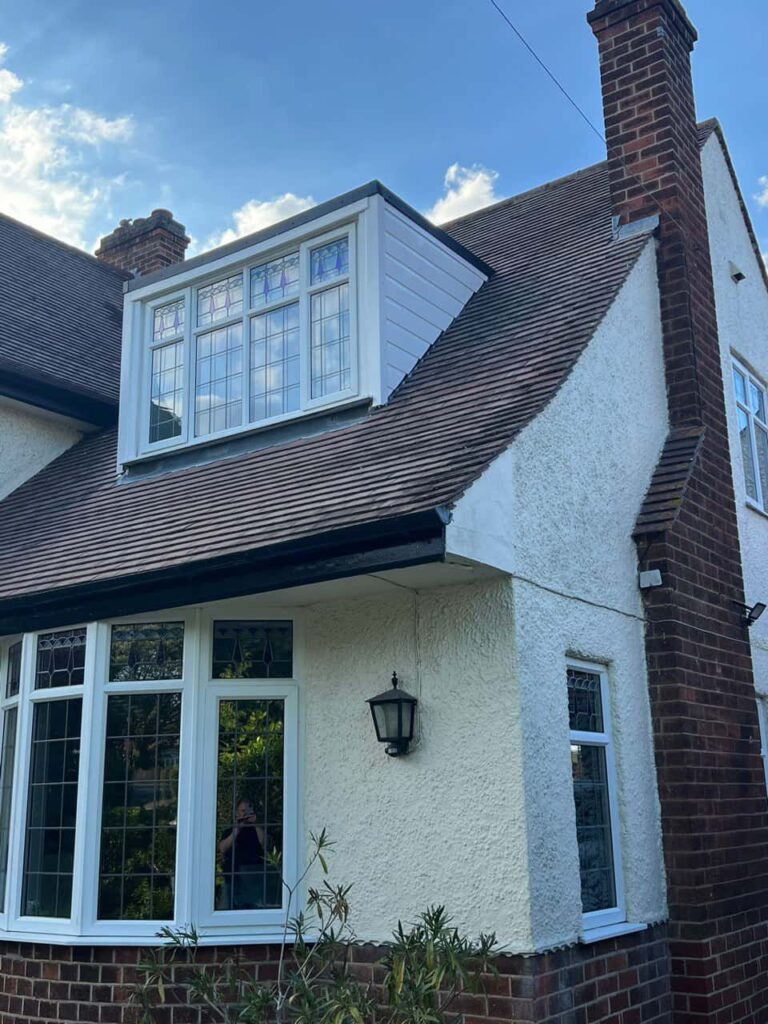Roof leaks are a common yet serious problem that many homeowners face, particularly during the colder months when rain and snow are more frequent. One of the most effective ways to prevent leaks is by ensuring that your roof’s lead flashing is properly installed and maintained. In this article, we’ll explore the importance of lead flashing and how it helps safeguard your home from water damage.
What is Lead Flashing?
Lead flashing is a material used to direct water away from the joints or seams of a roof, preventing water from seeping into the structure. It is often installed around chimneys, skylights, roof valleys, and where the roof meets walls or other structures. The flexibility and durability of lead make it the ideal material for these vulnerable areas, as it forms a tight, waterproof seal that can expand and contract with the roof’s movement.
Lead flashing is typically installed in layers, with each layer overlapping the one below it, ensuring a continuous barrier against water. This makes it incredibly effective at keeping water from entering your home and causing extensive damage.
How Lead Flashing Prevents Roof Leaks
Proper lead flashing installation plays a vital role in preventing leaks by addressing key areas of vulnerability. Here’s how it works:
1. Sealing Roof Joints and Edges
The most common place for roof leaks to occur is at joints and edges where different parts of the roof meet. For example, where the roof meets a chimney or a wall, water can easily seep through gaps if not properly sealed. Lead flashing is placed at these vulnerable points to form a watertight seal, preventing rainwater from infiltrating these areas.
2. Adapting to Roof Movement
Roofs naturally expand and contract due to temperature fluctuations, which can cause materials to shift. Lead flashing is highly flexible, which allows it to expand and contract with the roof’s movement. This prevents cracks or gaps from forming, which could otherwise lead to leaks. The malleability of lead ensures it stays securely in place even under changing conditions.
3. Resistant to Corrosion
One of the key benefits of lead flashing is its resistance to corrosion. Unlike other metals, lead is highly resistant to rust and degradation, making it an ideal choice for outdoor and exposed applications like roofing. It remains intact over time, providing long-lasting protection for your roof and reducing the risk of leaks caused by material wear.
4. Long-Term Durability
Lead flashing is known for its durability. Properly installed lead flashing can last for decades without needing replacement, offering long-term protection against roof leaks. This durability makes it an excellent investment, as it reduces the need for frequent repairs or replacements.
Signs That Your Lead Flashing May Need Attention
While lead flashing is highly durable, it’s still important to regularly inspect it to ensure it’s functioning properly. Here are a few signs that your lead flashing may need maintenance or replacement:
1. Visible Cracks or Gaps
If you notice any visible cracks or gaps in your lead flashing, water may be able to seep through these areas and cause leaks. Over time, exposure to the elements can cause the flashing to weaken, which is why it’s important to address any damage quickly.
2. Water Stains Inside Your Home
If you spot water stains on your ceiling or walls, this could be a sign that your roof is leaking due to damaged flashing. Even small leaks can lead to significant damage over time, so it’s essential to have the issue addressed as soon as possible.
3. Loose or Damaged Flashing
Flashings that are loose, bent, or missing can no longer serve their purpose. If you notice flashing that isn’t properly secured or appears to be damaged, it’s time for an inspection and potentially a repair or replacement.
4. Moss or Lichen Growth
The growth of moss, lichen, or algae on your flashing can indicate that water is not flowing properly. This could be a sign that your flashing needs attention and might not be properly protecting your roof.
The Importance of Professional Installation and Maintenance
While it may be tempting to attempt DIY repairs or installations, lead flashing should always be installed and maintained by professionals. A roofer with experience in lead flashing will ensure that it is properly shaped, installed, and secured to your roof, preventing any potential issues that could result in leaks.
Professionals can also perform regular inspections to identify early signs of damage or wear, allowing them to fix any problems before they turn into costly leaks or roof damage.
Conclusion
Lead flashing is an essential component of a well-maintained roof, and its proper installation and upkeep can prevent costly roof leaks and water damage. Whether you’re installing new flashing, repairing existing damage, or maintaining your roof, professional roofing services are crucial to ensuring your home remains protected from the elements.
If you suspect that your lead flashing is compromised or you need expert advice on roof maintenance, don’t hesitate to contact a professional roofer. At Clifton Roofing Repairs, we offer comprehensive roofing services that include the installation, repair, and maintenance of lead flashing, ensuring your home stays safe and dry for years to come.
Call us on: 0115 647 1193
Click here to find out more about Clifton Roofing Repairs
Click here to complete our contact form and see how we can help with your roofing needs.

